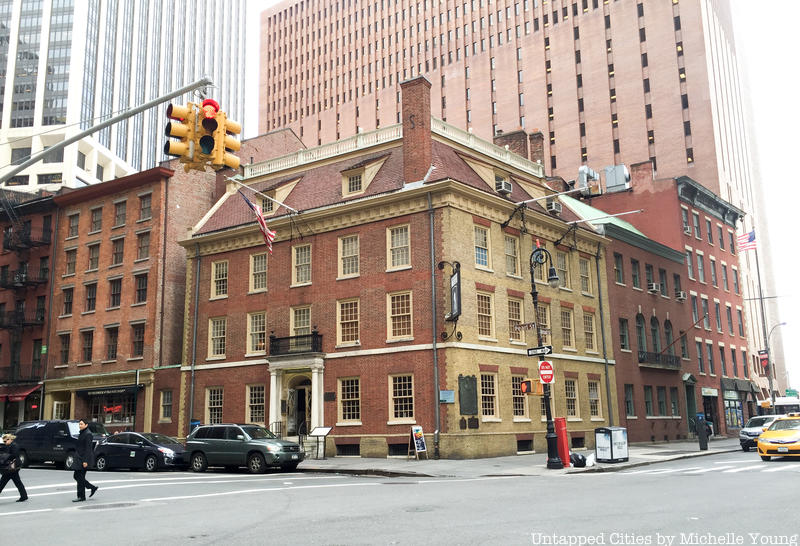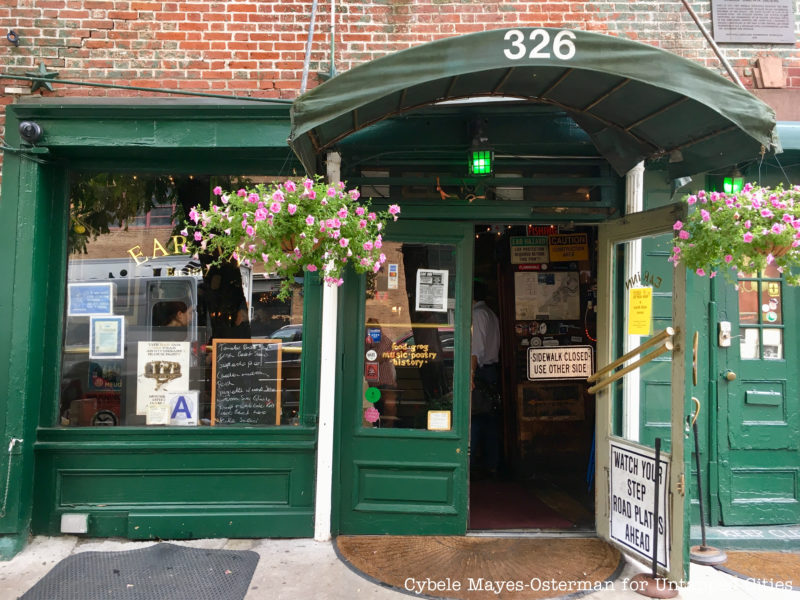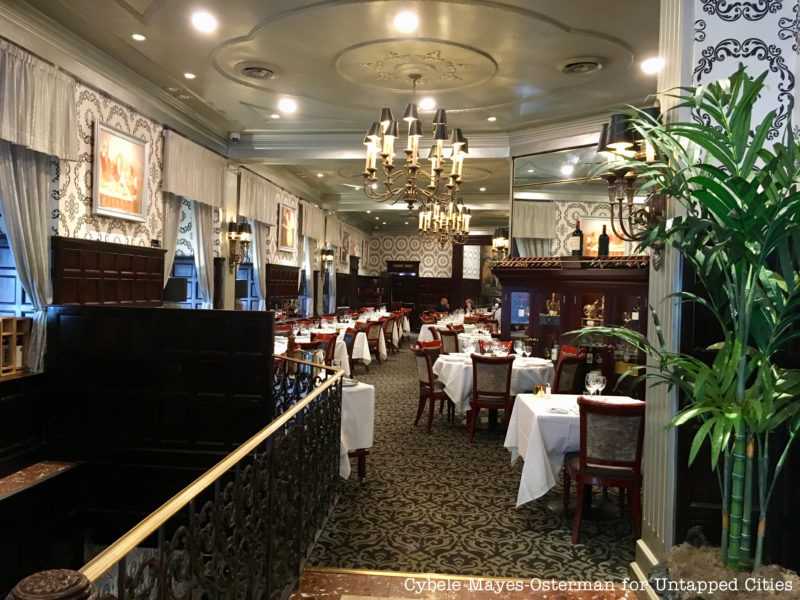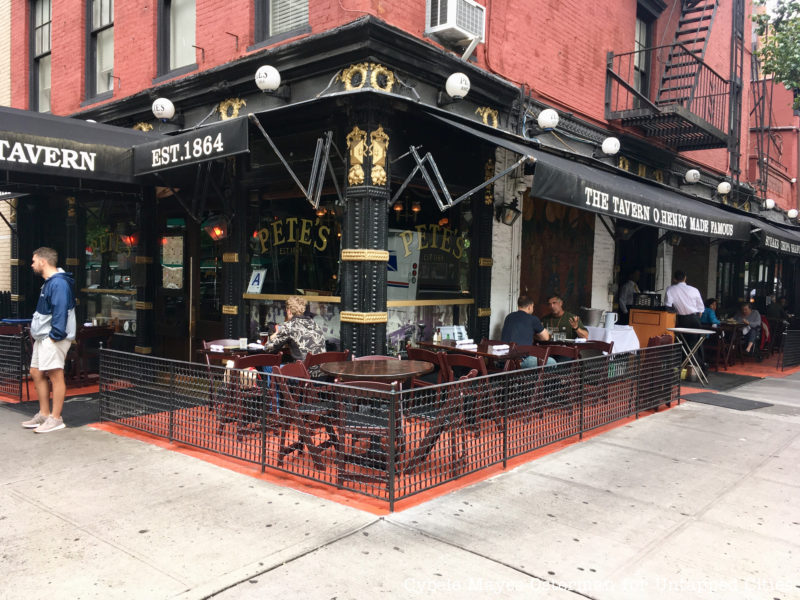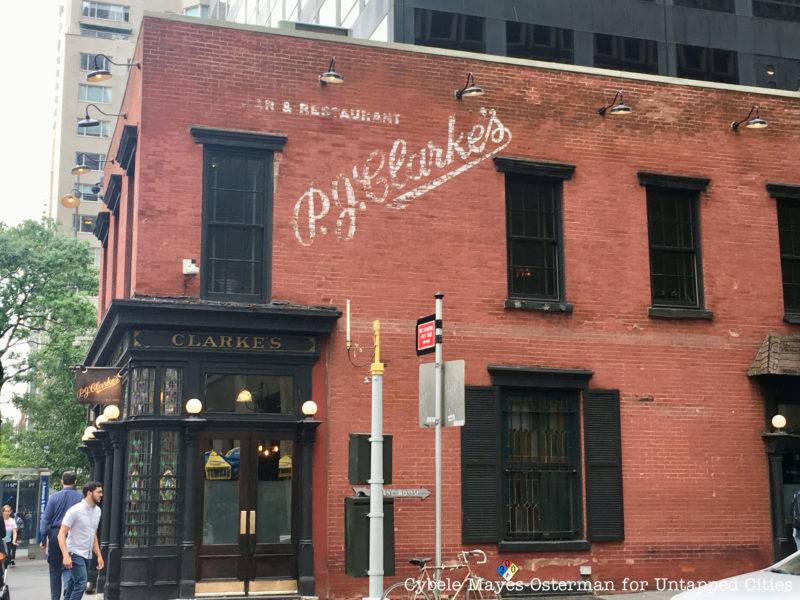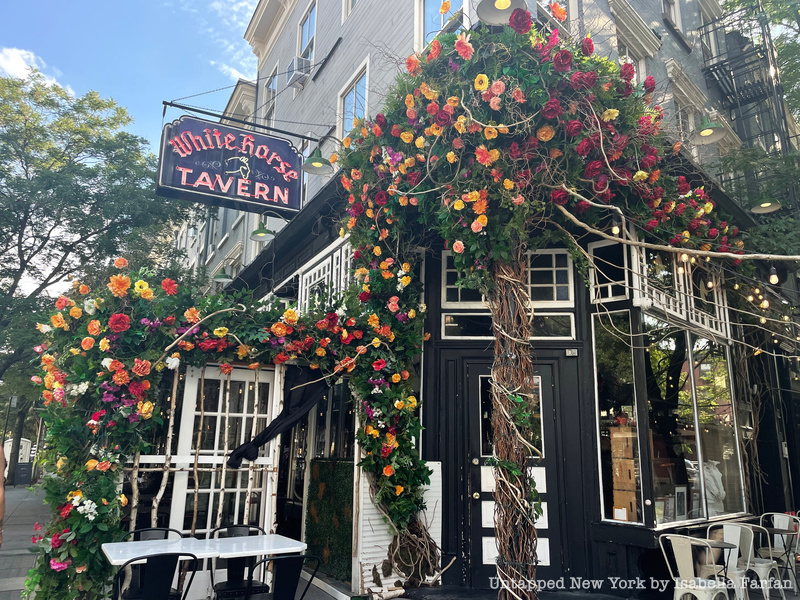
Looking to experience the culinary side of Manhattan’s history? Look no further than these 10 classic restaurants cherished by local New Yorkers, all of which were founded before the turn of the 20th century. From the first fine dining restaurant to a famous Jewish deli, these spots offer delicious menus served with a journey into the past. So take a tour of the dishes that made the city’s food scene internationally known, and treat yourself to the delectable dishes of Manhattan’s 0ldest restaurants:
1. Fraunces Tavern (1762)
Fraunces Tavern, dating back to 1762, is widely considered to be the oldest restaurant in the city. There is some debate as to the actual age of the building itself. While the brick house in the Financial District that would become home to the restaurant dates back to sometime between 1719 and 1722, it has been rebuilt and renovated countless times, causing many to wonder whether it can claim to be as old and authentic as it does.
Nonetheless, what is known is that before Samuel Fraunces opened it for tavern service as the “Sign of Queen Charlotte,” it was used as a dance school and trading firm. Even General John Lamb sending a cannonball through the tavern’s wall during a scuffle with the British in 1775 did not deter the popular establishment’s business. The year after, the British captured the restaurant and forced the staff to feed their soldiers. When they were finally driven out on November 25th of 1783, General George Clinton held an honorary banquet there for George Washington, whose tooth is now on display in the upstairs museum. Today, its incredible story is documented in the museum that stands just above the restaurant. Next to the numerous landmarks of American history that occurred inside, the fact that the restaurant also serves a great brunch and specializes in fine beer and whiskey is just a bonus.
2. Ear Inn (1817)
Tucked away on the far west side of Soho, this cozy beer and burger joint remained nameless until the ’70s, when the owners covered the round parts of the “B” in a lighted “Bar” sign outside, and the catchy name appeared. The building housing the Ear Inn dates back to 1770 when it was constructed in honor of James Brown, an African soldier who resisted the British by George Washington’s side and supposedly makes an appearance in the famous painting of Washington crossing the Delaware River. From there, the Inn made good money servicing sailors a refreshing drink while stopping on their way down the Hudson River (which was only a mere five feet from the building originally). Timber found in its attic sparked rumors that this bar was built using leftover lumber from the Great Fire of 1776.
Food and restaurant service began in the early 20th century. During Prohibition, the bar was converted into a speakeasy and reopened publicly upon the passage of the 21st amendment. With nautical-themed decor and blooming flowerpots hanging outside, the Ear Inn remains a popular spot to grab a drink or a bite to eat. They have also adopted a “farm to table” policy, so even bar snacks are prepared with fresh, healthy ingredients.
3. Delmonico’s (1837)
Delmonico’s claims to be the first fine dining restaurant in the country. It was opened by the Delmonico brothers in 1837 and gained a reputation as an elite establishment offering private dining rooms and the largest wine cellar in the city to those who could afford it. Delmonico’s credits Charles Ranhofer, its executive chef during the Civil War era, with creating such American classics as baked Alaska, lobster Newburg, chicken a la Keene, and eggs benedict. This last claim has incurred some controversy regarding who was responsible for the birth of the classic brunch dish. The idea, originally meant to cure a hangover, is attributed to both Ranhofer and the Waldorf Astoria chef Oscar Tschirky.
The Delmonico steak, originally meaning whatever the cut of the evening was in the restaurant, is now typically a boneless rib-eye, cut thick and served without brushing, a purist mentality. It is known as a “black and red” steak, or charred on the outside but medium rare on the inside, a difficult combo for chefs to pull off.
4. Pete’s Tavern (1864)
While Pete’s may not be the absolutely oldest restaurant on this list, it is, for good reason, the oldest continually operating restaurant in New York. The atmosphere is nostalgia at its core, with black and white snapshots of the tavern through the years lining the walls. Besides serving delicious “saloon style” eats, its claim to fame is that O. Henry was once a regular.
Pete’s was a favorite spot of the short story writer between 1903 and 1907 when he lived nearby, and one table on the dining floor is still marked as the place where he wrote his masterpiece of misbegotten generosity The Gift of the Magi. Perhaps hoping to tap into O. Henry’s energy, Ludwig Bemelmans also wrote the well-loved children’s book Madeline while sitting in Pete’s. If you’re not inspired by the literary history, you will be by the classic dishes and lengthy cocktail list.
5. Old Homestead Steakhouse (1868)

Old Homestead is not only one of New York’s oldest, but also the longest continuously operating steakhouse in the United States. Like many other current steakhouses in New York, this one was born in 1868, around the same time as the concept of a “chophouse” gained popularity, It was originally known as the Tidewater Trading Post, because the Hudson River of the time ran next to it, straight through the center of what is now Chelsea. The restaurant was purchased by Harry Sherry, who got his start working in the back as a dishwasher, and has been run by the same Sherry family for over 70 years.
Besides its impressive legacy, the Old Homestead’s other claim to fame is that it’s responsible for the first importation of Wagyu, or Kobe beef to the U.S. in the 1990s. Kobe, a region of Japan native to the unique Wagyu cows, produces some of the most high-priced and delicious steaks in the world, widely revered by food critics as the absolute best. To put it in perspective, a Wagyu burger from the Old Homestead will cost you $47. If you’re looking for the highest of the high quality and you don’t mind a little splurge, the Old Homestead has had your back for over 150 years.
6. Landmark Tavern (1868)
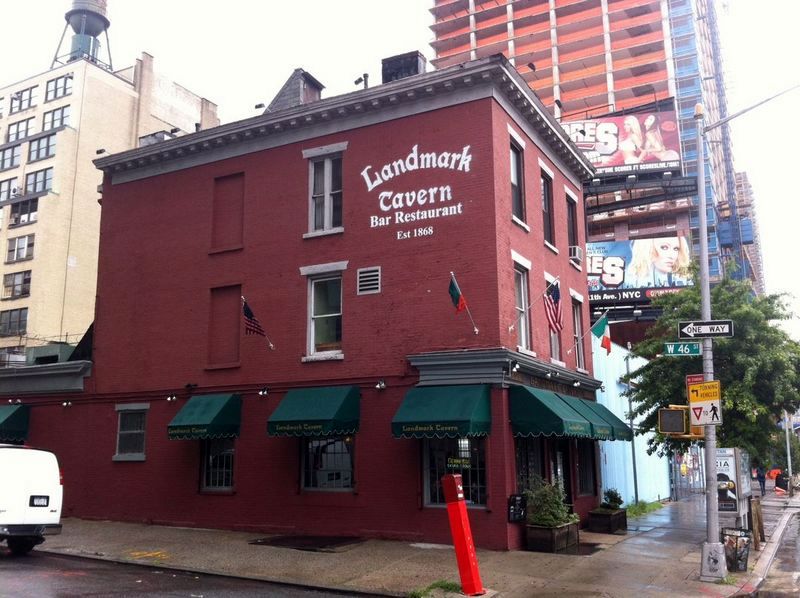
In 1868, Patrick Henry Carley opened the Landmark Tavern, an Irish waterfront saloon along the shores of the Hudson River. Carley and his wife designed their new saloon to serve as a home for their children on the second and third floors. However, during Prohibition, they were forced to turn the third floor into a speakeasy. The bar was a regular hangout for a Hell’s Kitchen gang called the Westies. The tavern is also supposedly haunted — the ghosts of George Raft, a Confederate soldier, and an Irish immigrant girl have been seen over the years.
The Landmark Tavern still retains its classic old New York charm. Located on 11th Avenue and West 46th Street in Hell’s Kitchen, the tavern still serves up classics like shepherds pie, bangers and mash, and corned beef and cabbage, but has more recently introduced items like duck confit, lobster ravioli, and Asian vegetable spring rolls.
7. Whitehorse Tavern (1880)

As spelled out clearly on its website, the Whitehorse Tavern claims the title of the second oldest pub in New York, at 139 years old. It got its start in the mid-19th century, catering to Irish communities in the Village. But it didn’t gain a real name for itself until the 1930s, when the Whitehorse was swept up in the counter-culture movement, and became a hub of leftist politics, writer’s circles, and cutting-edge music. Over the years, its lineup of regulars has included musicians Bob Dylan and Mary Travers of Peter, Paul, and Mary.
As the favorite of writers like Jack Kerouac, James Baldwin, Norman Mailer, William Styron, Allen Ginsburg, and more, the Whitehorse, then known as “the Horse,” has a special place in the Village’s literary tradition. Graffiti in the bathroom reading “GO HOME JACK” is testimony to the many times Jack Kerouac was kicked out for drunken behavior. A portrait also hangs over the favorite seat of Dylan Thomas, who may have spent his last hours at the bar in 1953. The iconic culture paper, The Village Voice, also traces its roots back to conversations at the bar of the Whitehorse. In 1969, it was awarded a historic landmark designation, which has saved it from alteration several times. Today, its virtue still lies in adherence to its history, with a nostalgically-styled bar and mementos of the old days lining the walls.
8. P.J. Clarke’s (1884)
Some restaurants may be older than this homey burger bar, but few have as impressive a lineup of famous diners as P.J. Clarke’s. Its website quotes Nat King Cole, who called its burger “the Cadillac of burgers,” and says that “Buddy Holly proposed to his wife here five hours after they met.”
The pub got its start in 1884 serving beer to Irish immigrants and became even more popular during Prohibition when it illegally brewed and imported gin and scotch. From then on, P.J.’s wormed its way into the hearts of multiple stars, like Frank Sinatra, Jackie O, Peter O’Toole, Elizabeth Taylor, and Johnny Mercer. (The bar is almost certainly the inspiration for the boozy ballad “One for My Baby,” which Mercer wrote on the back of a napkin in the restaurant.) Author Charles Jackson also penned The Lost Weekend while dining here, and the motion picture on which it was based was filmed on a Hollywood set modeled after P.J. Clarke’s. It was also a filming location for Mad Men and Annie Hall. When the property was finally sold by the Lavezzos in 1967, a 99-year leaseback was included. So, go try the burger loved around Hollywood, lest you regret it come 2066 when the lease expires.
9. Keen’s Steakhouse (1885)
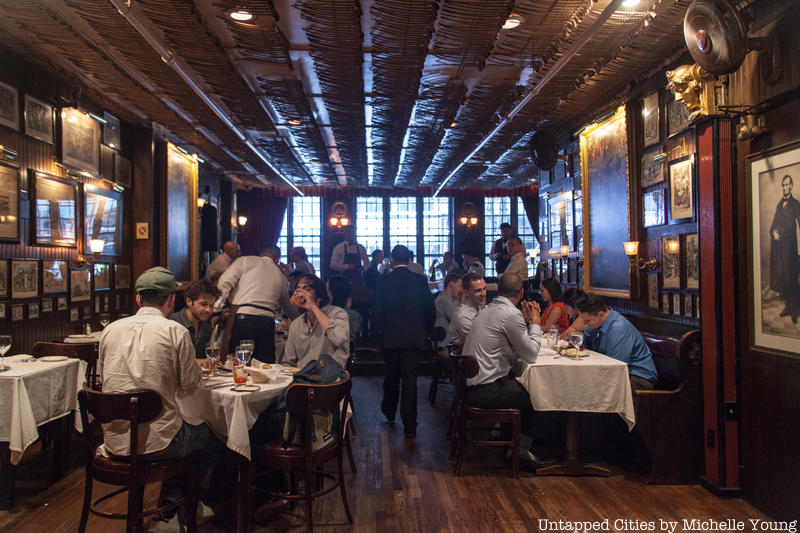
The walls of Keen’s Steakhouse are covered in old playbills and theater memorabilia. That’s because when this high-end steakhouse and oyster establishment opened in 1885 under the managerial leadership of its namesake, Albert Keen, it was mainly used by actors and performers from next door Garrick Theatre as a place to freshen up between acts. The actors starring in Abraham Lincoln’s last show were once among them, hence a wall of Lincoln memorabilia that includes the final show’s playbill on one wall of the restaurant.
The other unusual decor that will catch diners’ eyes are the long clay pipes that completely cover the ceiling of every room of the restaurant. During the turn of the century, Keen’s became a Pipe Club, or an inn in which travelers could check their pipes. Members could stop by Keen’s for a smoke, and then have their personal pipes kept behind the desk. Each pipe now hanging on the wall represents a member, including Teddy Roosevelt, Buffalo Bill, Babe Ruth, and Albert Einstein. Broken pipes signify a deceased member, as the stem of a pipe was broken when its designated owner passed away. Nowadays, Keen’s provides a gilded, old-world dining experience. Their mutton chops are especially renowned, and were praised by James Beard as putting “everyday chops momentarily in the pale.” Come for the flavor, stay to pick out the well-known names on the pipes that line the wall.
10. Katz’s Delicatessen (1888)
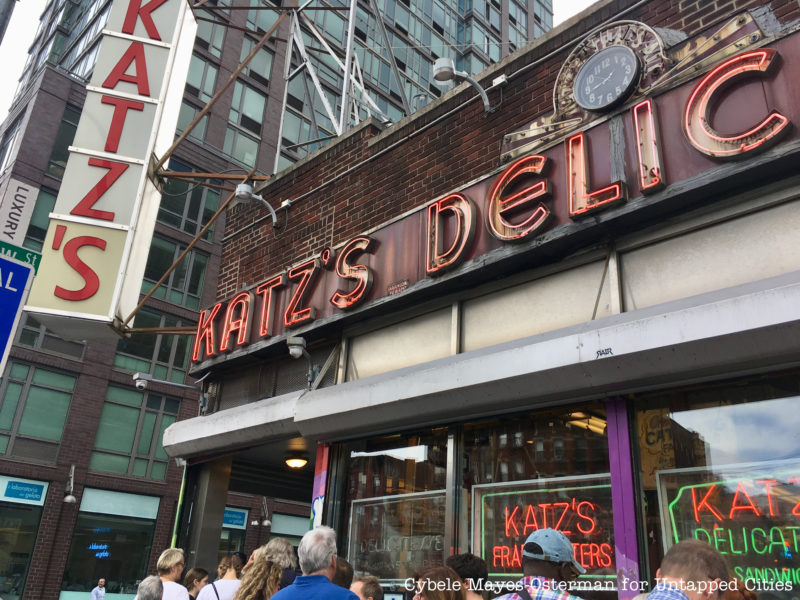
Anyone who’s been around the Lower East Side has either seen or heard of Katz’s Delicatessen. That’s not to mention its roles in multiple films, most notably When Harry Met Sally, but also Across the Universe, Donnie Brasco, and Enchanted. Silver screen appearances aside, they still make what is renowned as the best pastrami sandwich in the city.
Back in 1888, the Jewish-run diner was “Iceland Brothers,” until it merged with the Katz family and became “Iceland and Katz,” and then just “Katz’s” when the latter bought the Icelands out. Its original location on Ludlow was next to the National Theatre, where it gained the business of Yiddish actors on Friday nights because most other nearby Jewish delis were closed for Shabbat. Katz’s look today is due to the influx of money it received from a WWII campaign it launched called “send a salami to your boy in the army,” which was later used in the 1952 film At War with the Army. Its first film role was in the Frank Sinatra film Contract on Cherry Street, and from then on, it’s been the enduring icon of Jewish New York delis and quality sandwiches alike.
Next, check out 10 of the oldest bars and restaurants in Brooklyn!






